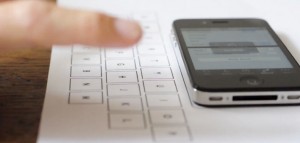Not only is the Schulich Library open for business and has it just finished celebrating its grand reopening earlier this week, but now the Waitz system is up and running in the library! Some of you may already be familiar with Waitz from the McLennan-Redpath Library Complex where it’s been in place since 2020 (with a little pause called Covid-19 that put the service on hold while the libraries were closed). What you might not know is that Waitz was founded by university students in 2018 who were tired of the crowds in their campus library at UC San Diego. The Waitz system is now being used in other types of locations like gyms, campus buildings and companies. You’ll find more information here on the company, which is now called Occuspace.
So how does it work? There are sensors on each floor that capture radio signals from Bluetooth and WiFi in the area to estimate how many people there are in the spaces. There is no personally identifiable information stored in the system and the information Waitz gathers is 80-95% accurate. You’ll find lots more details about how Waitz works at McGill Library here.
And how do you use it? You can simply go to the McGill Waitz page for real-time data on how busy it is in Schulich Library or you can download the app here: https://waitz.io/. Pro tip: the 1st floor (otherwise known as the basement) in Schulich Library is almost always a good bet. Now you know all you need to know before you go!






